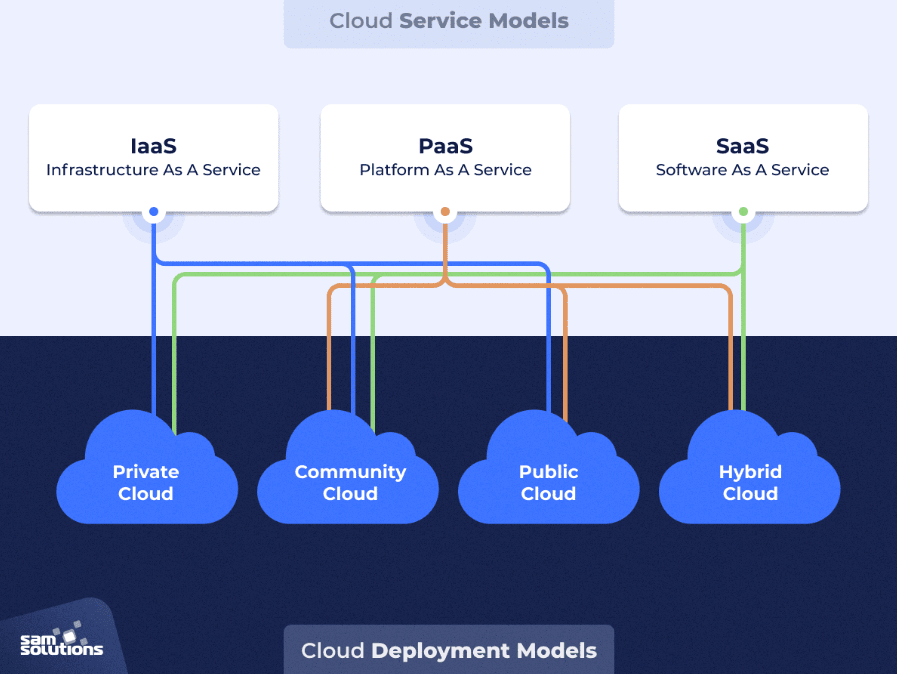
Digital transformation is more than a buzzword—it’s a strategic imperative for businesses aiming to remain competitive in today’s fast-paced, tech-driven landscape. At the heart of this transformation lies the cloud—a powerful enabler of agility, scalability, innovation, and cost-efficiency.
Cloud solutions have emerged as the backbone of digital transformation. They empower organizations to be more agile, scalable, data-driven, and cost-efficient. From startups to multinational enterprises, businesses are embracing the cloud to reimagine their operations and unlock new opportunities.
Understanding Digital Transformation
Before exploring how cloud solutions facilitate digital transformation, it’s important to understand what digital transformation truly involves.
Digital transformation is:
- The integration of digital technology into all areas of business.
- A cultural shift that requires organizations to continually challenge the status quo, experiment, and embrace failure as part of learning.
- A holistic transformation of business models, value delivery, customer experience, and operational efficiency.
It’s not just about digitizing old systems—it’s about rethinking how value is created and delivered in the digital age.
The Role of Cloud in Digital Transformation
Cloud computing provides on-demand access to computing resources—like storage, servers, databases, software, and analytics—over the internet. It enables digital transformation in the following ways:
1. Agility and Speed to Market
Cloud platforms support faster development, testing, and deployment of applications.
- Rapid prototyping and innovation cycles
- Faster response to market changes
- DevOps integration for CI/CD pipelines
Outcome: Accelerated time-to-market for new services and products.
2. Scalability and Flexibility
Cloud solutions allow businesses to scale resources up or down based on demand.
- Elastic infrastructure
- Global reach without physical expansion
- Support for seasonal workloads or unexpected surges
Outcome: Efficient resource utilization without over-investment.
3. Cost Optimization
With cloud, businesses shift from CAPEX to OPEX, paying only for what they use.
- No need for costly hardware procurement
- Lower maintenance and operational costs
- Automated scaling to avoid over-provisioning
Outcome: Reduced IT overhead and predictable billing models.
4. Enhanced Collaboration and Mobility
Cloud enables secure access to data and applications from anywhere, on any device.
- Real-time collaboration tools (e.g., Microsoft 365, Google Workspace)
- Remote work enablement
- Unified communication platforms
Outcome: Boosted productivity and a more flexible workforce.
5. Remote Work Enablement
- Access cloud-based tools from anywhere
- Secure virtual desktops and collaboration tools
- Boosts workforce flexibility and employee satisfaction
Cloud Deployment Models That Support Transformation
Organizations can choose from several deployment models, depending on their requirements for security, compliance, and performance.
1. Public Cloud
- Operated by third-party cloud providers
- Highly scalable and cost-effective
- Examples: Amazon Web Services (AWS), Microsoft Azure, Google Cloud Platform (GCP)
2. Private Cloud
- Dedicated infrastructure for a single organization
- Greater control and security
- Suitable for sensitive workloads or regulated industries
3. Hybrid Cloud
- Combines public and private cloud environments
- Offers flexibility to run workloads where they perform best
- Ideal for gradual cloud migration or complex environments
4. Multi-Cloud
- Uses services from multiple cloud providers
- Avoids vendor lock-in
- Enhances resilience and optimization
Steps to Drive Digital Transformation with Cloud
1. Assess Readiness and Set Goals
Evaluate current systems, business needs, and digital maturity. Define transformation KPIs.
2. Choose the Right Cloud Model
Select between:
- Public Cloud (e.g., AWS, Azure, GCP)
- Private Cloud (for higher control/security)
- Hybrid Cloud (best of both worlds)
3. Create a Cloud Migration Strategy
Plan what to move, when, and how:
- Rehosting (Lift & Shift)
- Refactoring (Cloud-native redesign)
- Replatforming (Partial optimization)
4. Implement Secure Architecture
Design for performance, resilience, and security from day one.
5. Foster a Digital Culture
Encourage digital literacy, cross-functional collaboration, and agile mindsets.
6. Measure and Optimize
Continuously monitor performance, usage, and user feedback. Use insights to improve.
Technologies Powering Cloud-Driven Digital Transformation
| Technology | Purpose |
| Containers | Lightweight and portable application deployment |
| Kubernetes | Orchestration of containerized workloads |
| Serverless Computing | Execute code in response to events, without managing infrastructure |
| Big Data & Analytics | Process and analyze vast datasets in real-time |
| Artificial Intelligence | Enable predictive insights, automation, and personalization |
| Machine Learning | Continuously improve applications based on data |
| SaaS Platforms | Access enterprise tools without installation or maintenance |
| Infrastructure as Code (IaC) | Manage infrastructure using code for repeatable, automated provisioning |
Digital Cloud Transformation Best Practices

While the digital cloud transformation strategy will look different depending on the organization, keeping these best practices in mind will help you ensure the transition is a smooth one:
- Begin with your focus on the people involved. Digital transformation cloud solutions should always benefit the people using them, so begin with your people. Talk to your customers and business partners about their experiences with your current technology, data, applications, and more. Ask them to tell you what is working and what is not. Have open conversations with your employees, and ask them to cite areas where they see waste, or anticipate potential growth.
- Establish your goals. After determining the particular areas where changes are necessary shift focus to the end goal of those changes. Without objectives, it’s easy to get lost in the endless possibilities and ideas supplied by digital transformation cloud solutions. Remember, more can be done once you achieve your initial goals.
- Focus on the data. Because digital cloud transformation solutions are technological updates at their core, keep your focus there. Use data to drive your decisions, and utilize IT specialists and cloud service partners if you have them. During the transition, ensure data remains secure and intact.
- Seek efficiency. Digital transformation cloud migration is an efficient process that seeks to pre-build efficiencies into your future offerings. Work with a cloud digital transformation services partner or IT specialist to build a schedule for your digital transformation. Reduce downtimes and ensure consistent access by implementing multiple transitions at once.
- Come back to the customer. Your end goal is to provide a more fluid, efficient experience for your customers. Once the digital transformation cloud migration is complete, keep the open dialogue going, and remain open to listening to any pain points or creative solutions offered.
Real-World Use Cases
🔹 Healthcare
- Hospitals use cloud platforms for real-time diagnostics, telehealth, and patient portals.
- AI-driven analysis of medical imaging and patient data for faster diagnosis.
🔹 Retail
- E-commerce platforms scale globally using cloud infrastructure.
- Real-time customer behavior tracking and dynamic pricing engines.
🔹 Finance
- Cloud-native digital banking services with robust cybersecurity.
- Automated compliance and fraud detection using AI.
🔹 Education
- Virtual learning environments using cloud-hosted platforms.
- Content delivery and collaboration tools for students and teachers.
Challenges and Considerations
While cloud solutions offer numerous benefits, there are challenges that must be addressed:
- Data Privacy: Ensuring data sovereignty and control in multi-region deployments.
- Vendor Lock-In: Difficulty switching providers due to proprietary tools or architectures.
- Complexity of Migration: Re-architecting legacy systems can be resource-intensive.
- Skill Gaps: Need for training and hiring cloud-literate staff.
- Governance: Managing cost, performance, and security in a decentralized environment.
Solutions:
- Partner with experienced cloud consultants or MSPs.
- Use cloud management platforms to govern usage and security.
- Establish a cloud center of excellence (CoE) within the organization.
Conclusion
Cloud solutions are not just tools—they are the foundation of digital transformation. By leveraging cloud technology, businesses can unlock innovation, speed, and resilience to adapt in a constantly evolving digital world. Success lies in aligning cloud adoption with business strategy, empowering teams, and continuously optimizing for growth.

